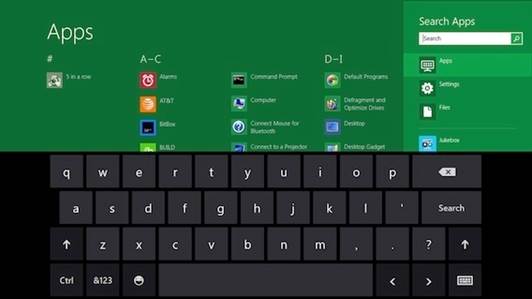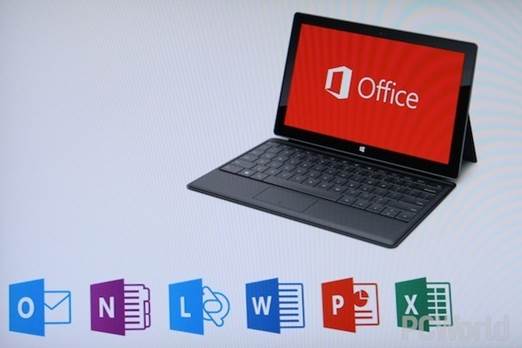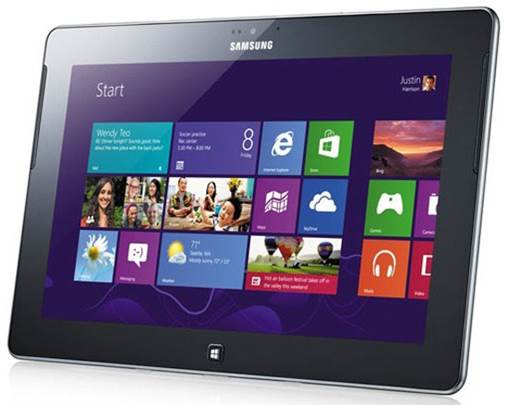The first reviews of Windows RT devices
appeared on the internet just as I was putting the finishing touches to this
column, I haven't yet laid fingers on a Surface, either in its Intel or ARM
form, but I've placed an order for two of the 64GB RT models. However, they're
not here, and editorial deadlines loom.
First a gentle reminder that Windows RT
running on ARM is a different operating system to Windows 8 for Intel. It's
different mainly because Microsoft wants it to be different. You can't take
existing Windows application source code and recompile it for ARM, then release
it onto the Windows desktop part of Windows RT. There's no technical reason why
not; it's purely a marketing decision by Microsoft, to block third-party
applications from the Windows desktop-on-ARM version of Windows 8. And as with
so many of Microsoft's decisions over the years, it doesn't actually apply to
Microsoft itself, which is why the version of Office bundled with Windows RT
for ARM is nothing other than existing Windows application code recompiled for
ARM. In other words, Microsoft has done exactly what it forbids you, me and
Uncle Joe from doing.

First
a gentle reminder that Windows RT running on ARM is a different operating
system to Windows 8 for Intel.
Why is this? Well, because Microsoft wants
to corral developers into writing "Modern"-style applications that
run on the WinRT subsystem on ARM, rather than just recompiling all their old
code and running it on the Win32 subsystem on ARM. In truth, a great deal of
this old legacy code wasn't written with a view to it ever being run on
low-power processors. It would sit there consuming excess processor cycles in
an extremely inefficient manner, which would kill performance and battery life
on an ARM processor and make Microsoft and its new Windows RT platform look
bad. That's why it's banned.
So why has Microsoft allowed its own Office
team to create desktop versions of Office for Windows RT? The answer is that
the Office team didn't manage to come up with native "Modern" WinRT
applications in time, and given how important Office is to Microsoft, it's been
allowed a "get out of jail free" pass from the Windows team. Sound
fair? No. Would you expect Microsoft to act fairly over this? No. So let's not
spill too many tears over it. However, this whole Office-on- Windows RT affair
does finally bring an important issue into the foreground, simply because so
many of the reviews I've been reading are getting it wrong.

Office
for Windows RT
As an example, let's take the piece by
venerable writer Walt Mossberg. He says: "It comes with full versions of
standard Microsoft Word, Excel and PowerPoint. The three programs worked fine,
in creating documents and in editing ones from older versions of the software”
That would be fine, except that it isn't actually true. The only reason these
writers and bloggers say "full version of Office" is because they're
lightweight users of these tools, and the version does all they need. Don't for
even a moment believe that journalists are in any way representative of
mainstream users of the Office tools. I remember many years ago how a feature
for counting the number of words in a selection was added to a major word
processor, simply because all the journalists in the room needed it, although
almost everyone else in the world never used it.
So what's the problem with this Office
version? Well, take a look at http://tinyurl.com/bvnbyzm and check out the
question "Does Office Home & Student 2013 RT (Preview and the final
edition) include the same features as Office Home & Student 2013 on my
Windows 7 or Windows 8 PC?" The answer is: almost. Word, Excel, PowerPoint
and OneNote in Office Home Sr Student 2013 RT include the majority of Office
Home @ Student 2013 features available on PCs, and almost all the features most
customers use. But since tablets have special needs for security and mobility,
a few features are unavailable in Office Home & Student 2013 RT, including
macros, add-ins, and other custom programs written by users or developed by
third parties.
The lack of macro support, in Visual Basic for Applications (VBA),
is a huge deal for any power user of Office. Indeed,
it's potentially a big deal for many "ordinary" business users who
may have absolutely no idea that their documents and templates actually contain
macros. That's because they didn't put the macros there themselves, or write
them out line by line they were put there by their IT department for sound
business reasons. VBA is incredibly powerful for such jobs, since almost
anything in the application can be programmatically controlled, and the code
can be digitally signed and held in a common set of templates for everyone in
the firm to use. So, for example, the File I Open option might actually be
triggering the action of some macro to perform an extra line of business task,
of which you as the user are entirely unaware.

The
lack of macro support, in Visual Basic for Applications (VBA), is a huge deal
for any power user of Office.
This raises the question: what is Excel?
What does Office-compatible mean? Is it enough for the software to load a file
and allow you to edit it? For many people that will be fine, but what happens
if you're using add-ins or custom functions in Excel? They won't work under RT,
and it won't be possible to use a lighter-weight version of Excel instead to do
your work.
There are of course the Office Web
Applications, which are cut-down versions of the tools that can be run in a web
browser. They're extremely useful and their integration into SkyDrive means you
can work on quite complex documents from a browser. But the clear understanding
has always been that if you need the full capabilities of the underlying tool,
then you should download the file and work on it locally. So what if your local
version of the tool doesn't have the full functionality either? Then you've
just jumped out of the frying pan and into the fire...
For Microsoft Surface RT, the company is
keeping quiet about these limitations, which have come about because the Office
team not only failed to get a full WinRT version of its Office code ready in
time, but because it also failed to port VBA onto ARM. You'd think it could
have managed this, given that Office 2007 for Mac came without VBA support and
it proved to be a big deal indeed for business users, significantly limiting
its usefulness in work contexts. So for Office 2011 for Mac, the team completed
the porting of the codebase away from core Windows code to Mac OS X. Maybe the
work to go from Intel to ARM took the team off in an entirely different direction,
and the Mac experience isn't relevant.
Ah, you might say, the version of Office
that's on Windows RT is called the Home & Student Edition so it clearly
isn't aimed at power users. You might have been right, except for the fact that
macro support is in the Intel version. And I'll make no bones about the fact
that I'm deeply annoyed by the Microsoft double-speak that maintains these
power features have been removed "because tablets have special needs for
security and mobility". This is intelligence-insulting hogwash. It won't
be removed from the tablets that are running Windows 8 on Intel, so are these
tablets somehow different and do they have fewer "special needs for
security and mobility"? Of course they don't.